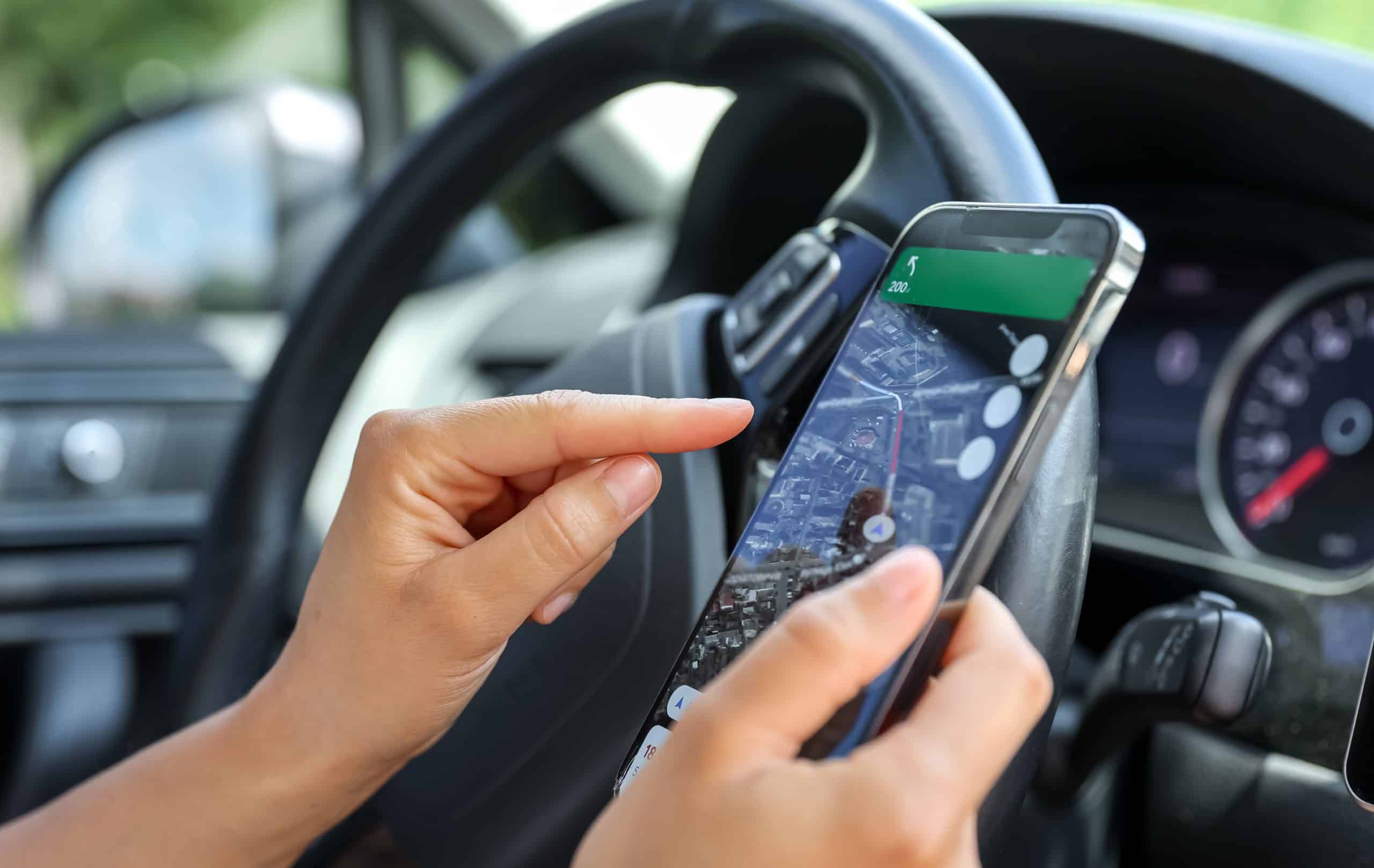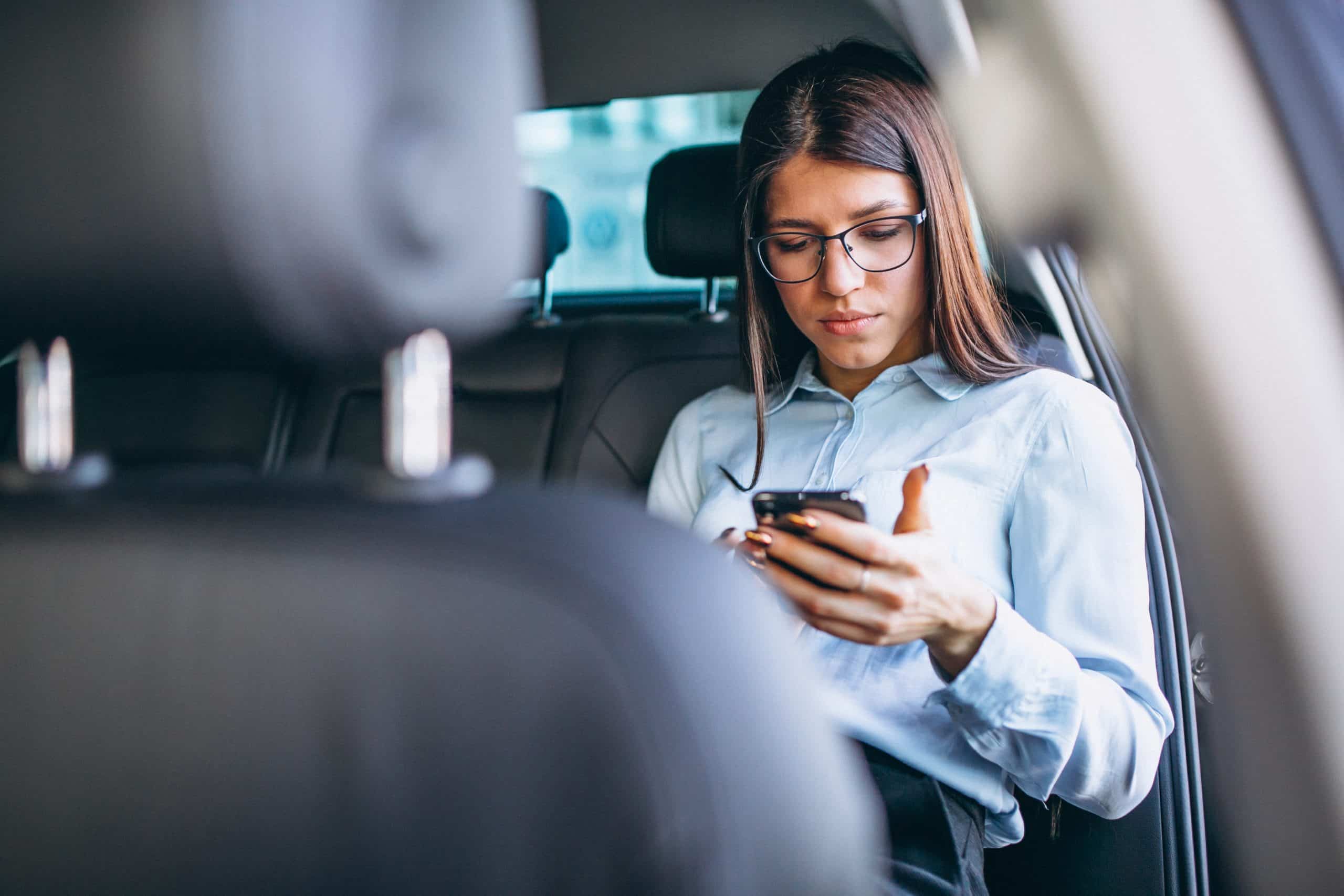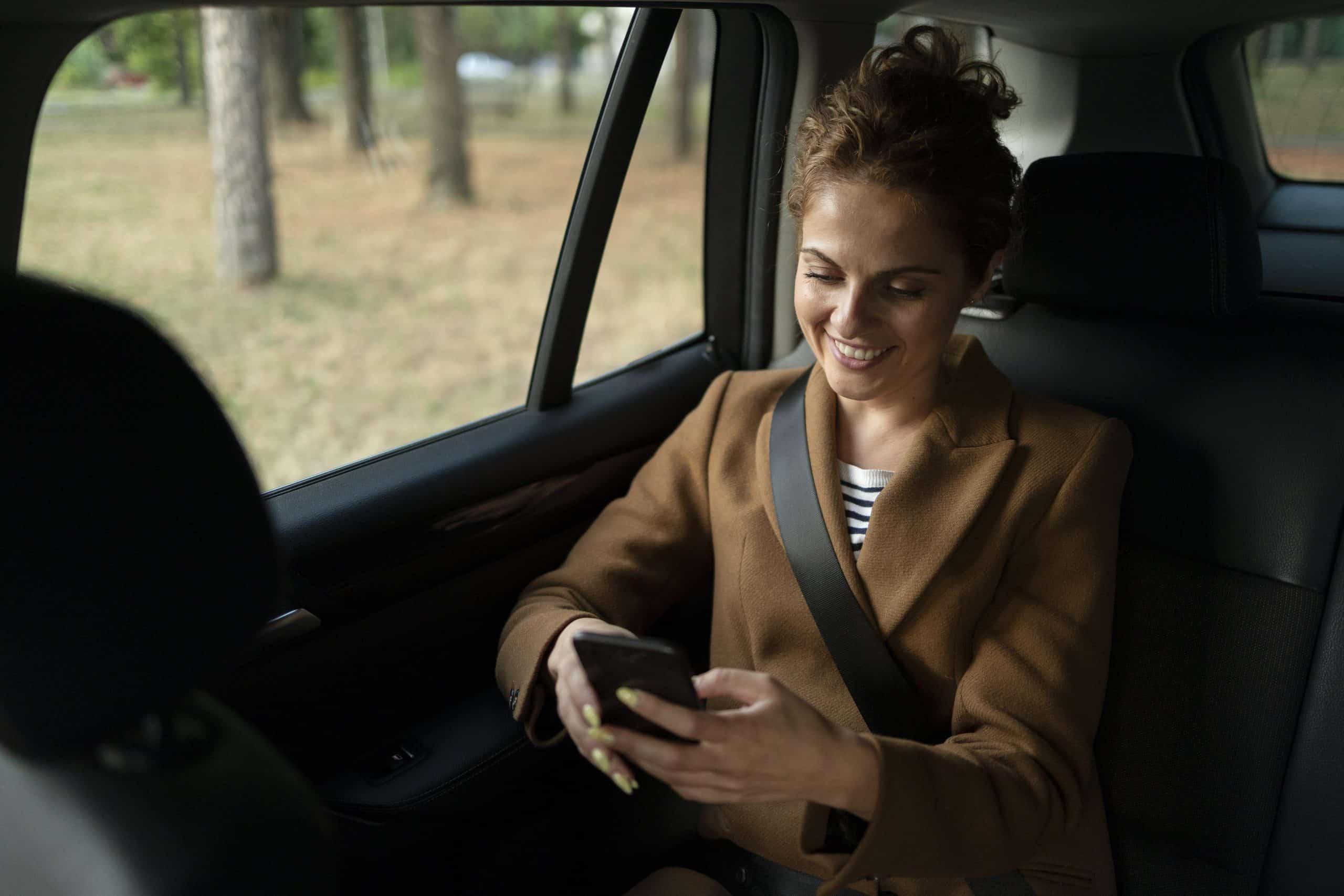In today’s digital age, ridesharing has become a convenient and popular mode of transportation. Services like Lyft and Uber have revolutionized the way we travel, eliminating the need for hailing cabs or waiting for public transport. However, as with any other form of transportation, ensuring your safety should be a top priority. That’s why every Lyft and Uber passenger should be aware of essential safety tips to protect themselves during their rides.
Whether you’re a seasoned rider or new to the rideshare experience, this article will provide you with a comprehensive guide on rideshare safety. From verifying your driver’s identity to understanding the app’s safety features, we’ll cover everything you need to know to ensure a secure and comfortable journey.
We’ll also address common concerns, such as sharing your location with loved ones, overhearing sensitive conversations, and dealing with problematic drivers. By the end of this article, you’ll have the knowledge and confidence to make informed decisions, allowing you to enjoy your rideshare experience while prioritizing your personal safety.
So, fasten your seatbelts and get ready to navigate the world of ridesharing with confidence and peace of mind.
Importance of Rideshare Safety
Rideshare safety is of utmost importance due to the inherent risks associated with getting into a vehicle with a stranger. While Lyft and Uber have safety measures in place, it’s crucial for passengers to take their own precautions as well. By being proactive and following safety guidelines, you can significantly reduce the chances of encountering any untoward incidents during your rideshare trips.
One of the primary reasons why rideshare safety should be a concern is the issue of driver background checks. While Lyft and Uber perform background checks on their drivers, it’s essential to understand that these checks are not foolproof. Therefore, passengers need to be cautious and take additional steps to ensure their own safety.
Additionally, rideshare safety also encompasses physical safety during the ride itself. Passengers need to be aware of their surroundings and take necessary steps to protect themselves from potential harm. This includes being mindful of personal belongings, avoiding sharing unnecessary personal information, and trusting their instincts if something feels off.
Ultimately, prioritizing rideshare safety is not just about protecting yourself but also contributing to the overall safety of the rideshare community. By being vigilant and responsible, you can help create a safer and more enjoyable rideshare experience for everyone.

Safety Features Offered by Lyft and Uber
Lyft and Uber have implemented various safety features within their apps to enhance passenger safety. These features are designed to provide reassurance and peace of mind during rideshare trips. Familiarizing yourself with these features will enable you to make the most of them and feel more secure while using the services.
One of the key safety features offered by both Lyft and Uber is the ability to share your trip details with friends or family. This feature allows you to send your trip information, including your driver’s name, license plate number, and real-time location, to a trusted contact. In case of any emergencies or concerns, your loved ones can track your journey and ensure your well-being.
Another important safety feature is the rating system, which allows passengers to rate their drivers. This two-way rating system encourages professionalism and accountability among drivers, as well as promoting transparency within the rideshare community. By providing honest feedback, passengers play a vital role in maintaining high safety standards.
Additionally, both Lyft and Uber have in-app emergency assistance features. These features allow passengers to contact emergency services directly from the app in case of emergencies or if they feel unsafe during the ride. By having this direct line of communication, passengers can quickly and easily reach out for help when needed.
Understanding and utilizing these safety features offered by Lyft and Uber can significantly enhance your rideshare experience and provide an added layer of security.
Tips for Ensuring Personal Safety During Rideshare Trips
While the rideshare platforms have taken steps to prioritize passenger safety, it’s important for passengers to take an active role in ensuring their own personal safety as well. By following these tips, you can minimize potential risks and feel more confident during your rideshare trips.
1. Verify Your Driver’s Identity: Before getting into a rideshare vehicle, always verify your driver’s identity. Check the driver’s name, photo, and license plate number provided by the app against what you see in person. If anything seems suspicious or doesn’t match, do not get in the vehicle and report the issue to the rideshare platform immediately.
2. Choose Well-Lit Pickup Locations: When requesting a ride, try to choose pickup locations that are well-lit and populated. Avoid dark or isolated areas, as they may pose a higher risk. If you feel unsafe or uncomfortable at the pickup location, consider moving to a more secure area or canceling the ride altogether.
3. Share Your Trip Details: Utilize the app’s feature to share your trip details with a trusted contact. This ensures that someone knows where you are and can track your journey in real-time. It’s an additional safety measure that provides peace of mind for both you and your loved ones.
4. Sit in the Backseat: When getting into the rideshare vehicle, always sit in the backseat. This creates a physical distance between you and the driver, providing an extra layer of personal space and security. It also allows you to exit the vehicle from either side in case of an emergency.
5. Pay Attention to the Route: Stay alert and pay attention to the route the driver takes. If you notice any deviations or suspicious behavior, politely ask the driver for an explanation. In case of serious concerns, consider ending the ride and contacting the rideshare platform immediately.
6. Trust Your Instincts: If something feels off or makes you uncomfortable during the ride, trust your instincts. Your intuition is a powerful tool for recognizing potential dangers. If necessary, don’t hesitate to ask the driver to pull over in a safe location and exit the vehicle.
Remember, proactive measures and staying vigilant are key to ensuring your personal safety during rideshare trips. By following these tips, you can minimize risks and have a more secure and enjoyable experience.

How to Verify Your Driver’s Identity
Verifying your driver’s identity is an essential step in ensuring your safety before getting into a rideshare vehicle. Lyft and Uber have implemented several measures to help passengers verify their driver’s identity, and it’s important to familiarize yourself with these steps.
1. Check the App for Driver Details: When your ride is assigned, check the app for driver details, including their name, photo, and license plate number. Make sure these details match the information provided by the app.
2. Confirm Driver Identity: As the driver arrives, compare their appearance with the photo provided in the app. Additionally, check the license plate number to ensure it matches the information displayed in the app.
3. Ask the Driver for Your Name: Before entering the vehicle, ask the driver for your name. Legitimate drivers will have access to this information, further confirming their identity.
4. Do Not Share Personal Information: While waiting for your ride or during the journey, avoid sharing unnecessary personal information with the driver. Maintain a professional and friendly demeanor without divulging sensitive details about yourself.
5. Report Suspicious Activity: If you encounter any suspicious activity or notice that the driver’s details do not match what was provided by the app, do not get into the vehicle. Report the issue to the rideshare platform immediately so they can investigate and take appropriate action.
Verifying your driver’s identity is a crucial step in ensuring your safety during rideshare trips. By following these steps and being vigilant, you can minimize the risk of getting into a vehicle with an unauthorized driver.
How to Report Any Safety Concerns or Incidents
In the unfortunate event that you experience any safety concerns or incidents during your rideshare trip, it’s important to report them promptly. Lyft and Uber have dedicated channels for reporting such occurrences, ensuring that appropriate actions are taken to address the situation and prevent future incidents.
To report safety concerns or incidents to Lyft:
1. Open the Lyft App: Launch the Lyft app on your device.
2. Access the Menu: Tap on the menu icon located in the top-left corner of the app’s interface.
3. Select “Ride History”: From the menu options, choose “Ride History” to view your past rides.
4. Select the Relevant Ride: Identify the ride during which the safety concern or incident occurred and tap on it to access the ride details.
5. Report the Issue: Within the ride details, scroll down until you find the “Contact” button. Tap on it, and you’ll be presented with options to report safety concerns, inappropriate behavior, or any other issues you may have encountered during the ride.
To report safety concerns or incidents to Uber:
1. Open the Uber App: Launch the Uber app on your device.
2. Access the Menu: Tap on the menu icon located in the top-left corner of the app’s interface.
3. Select “Your Trips”: From the menu options, choose “Your Trips” to view your past rides.
4. Select the Relevant Trip: Identify the trip during which the safety concern or incident occurred and tap on it to access the trip details.
5. Report the Issue: Within the trip details, scroll down until you find the “Need Help?” button. Tap on it, and you’ll be directed to a list of options to report safety concerns, inappropriate behavior, or any other issues you may have encountered during the trip.
By reporting safety concerns or incidents to Lyft or Uber, you play a crucial role in maintaining the safety and integrity of the rideshare community. Your feedback helps the platforms identify and address any potential risks, ensuring a safer experience for all passengers.

Legal Considerations for Rideshare Passengers
Understanding the legal considerations that come with being a rideshare passenger is essential for protecting your rights and ensuring a smooth experience. While Lyft and Uber have their own terms of service and policies in place, there are a few key legal aspects that passengers should be aware of.
1. Passenger Liability: As a rideshare passenger, you are generally not liable for any accidents or damages that occur during the ride. Rideshare companies like Lyft and Uber typically carry liability insurance to cover any injuries or damages caused by their drivers.
2. Insurance Coverage: Lyft and Uber provide insurance coverage for their drivers, but the extent of coverage may vary depending on the specific circumstances. It’s important to familiarize yourself with the insurance policies of the respective platforms to understand the coverage provided.
3. Personal Injury Claims: In the event of an accident or injury during a rideshare trip, you may be entitled to file a personal injury claim. Consult with a legal professional specializing in personal injury law to understand your rights and options.
4. Terms of Service: Prior to using the services of Lyft or Uber, it’s advisable to review and understand their terms of service. These terms outline the rights and responsibilities of both the passenger and the rideshare company, ensuring transparency and clarity.
5. Privacy Considerations: Rideshare platforms collect and store personal data, including trip details and payment information. Familiarize yourself with the privacy policies of Lyft and Uber to understand how your data is handled and protected.
Remember, while rideshare platforms strive to provide a safe and reliable service, understanding the legal considerations can help you protect your rights and make informed decisions as a passenger.
Additional Safety Measures to Consider
In addition to the safety features provided by Lyft and Uber, there are several additional safety measures that rideshare passengers can consider to enhance their personal safety. These measures can provide an extra layer of protection and peace of mind during rideshare trips.
1. Travel in Groups: Whenever possible, consider traveling with friends or colleagues. Group rides provide increased safety and reduce the chances of encountering any potential risks.
2. Share Your Live Location: Utilize apps or features that allow you to share your live location with trusted contacts. This can be an additional safety measure, especially during late-night rides or when traveling alone.
3. Be Aware of Surroundings: Stay alert and be aware of your surroundings at all times. Avoid distractions such as excessive smartphone use or wearing headphones, as these can make you more vulnerable to potential risks.
4. Keep Emergency Contacts Easily Accessible: Save emergency contact numbers in your phone or have them readily available. In case of emergencies, you can quickly reach out for help.
5. Learn Basic Self-Defense Techniques: Consider taking self-defense classes to equip yourself with basic techniques that can help you in case of physical confrontations or emergencies.
6. Trust Your Gut: Trust your instincts and intuition. If something feels off or suspicious, remove yourself from the situation and seek assistance as necessary.
Remember, personal safety is a shared responsibility. By taking these additional safety measures, you can further enhance your own safety and contribute to a more secure rideshare community.
Rideshare Safety Apps and Devices
In addition to the safety features provided by Lyft and Uber, there are various third-party rideshare safety apps and devices available that can enhance passenger safety. While these tools are not mandatory, they can provide an extra layer of security and peace of mind for rideshare passengers.
1. Personal Safety Apps: There are several personal safety apps available that can be installed on your smartphone. These apps offer features such as emergency SOS buttons, live location sharing, and automatic alerts to designated contacts in case of emergencies.
2. Dashcams: Dashcams are small cameras that can be mounted on the dashboard of a vehicle. They record video footage of the road ahead and can be valuable in capturing any incidents or accidents during rideshare trips.
3. Rideshare Safety Devices: Some companies offer rideshare safety devices specifically designed for passengers. These devices may include panic buttons, audio recording capabilities, or even pepper spray.
While these additional safety apps and devices can provide an extra layer of security, it’s important to research and choose reputable options. Read reviews, compare features, and consider your individual needs and preferences before investing in any of these tools.
Conclusion: Taking Responsibility for Your Own Safety
Ridesharing has undoubtedly transformed the way we travel, offering convenience and efficiency. However, it’s crucial to prioritize personal safety during rideshare trips. By following the tips and guidelines outlined in this article, you can navigate the world of ridesharing with confidence and peace of mind.
Remember to verify your driver’s identity, utilize the safety features offered by Lyft and Uber, and report any safety concerns.





























